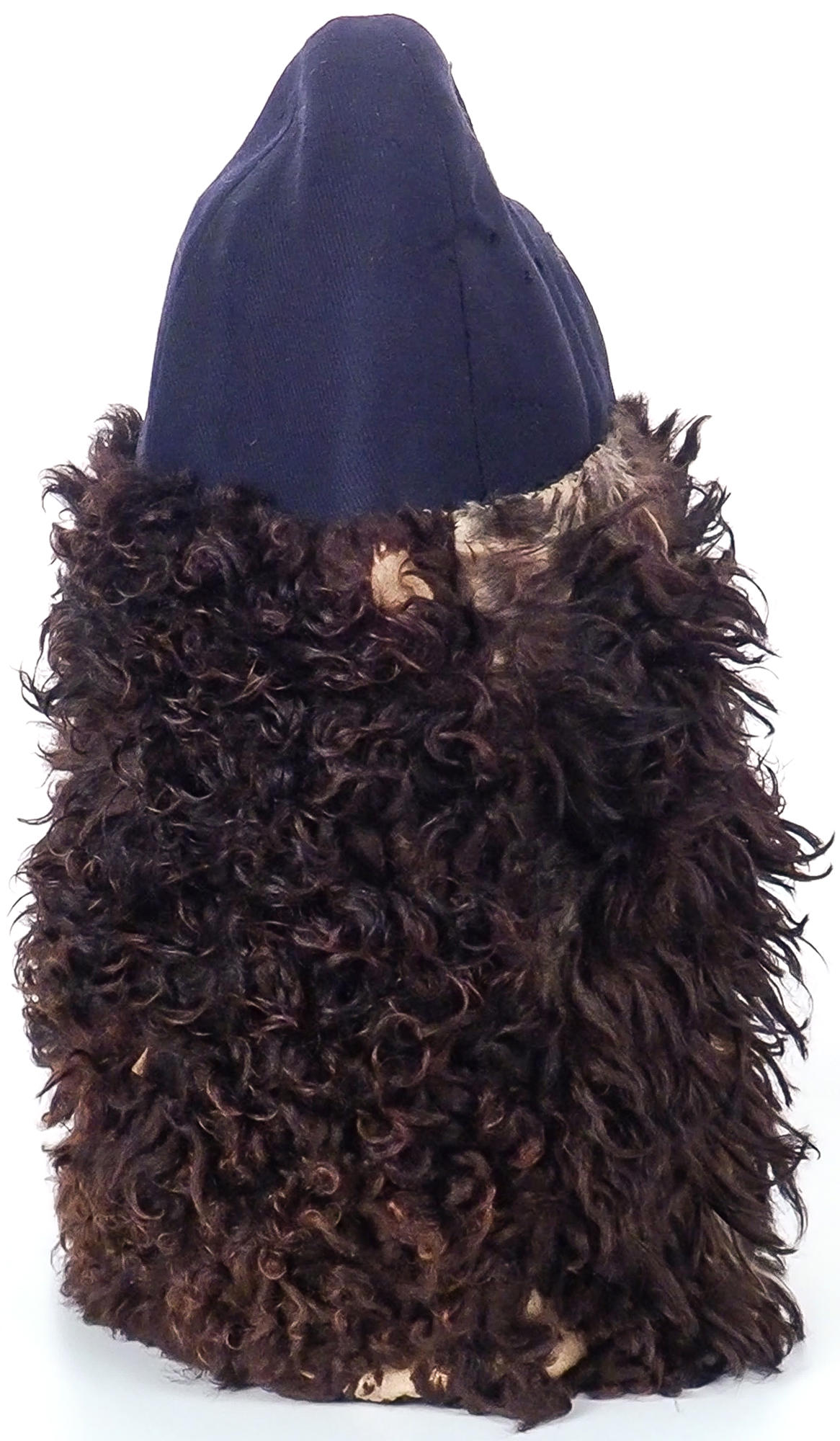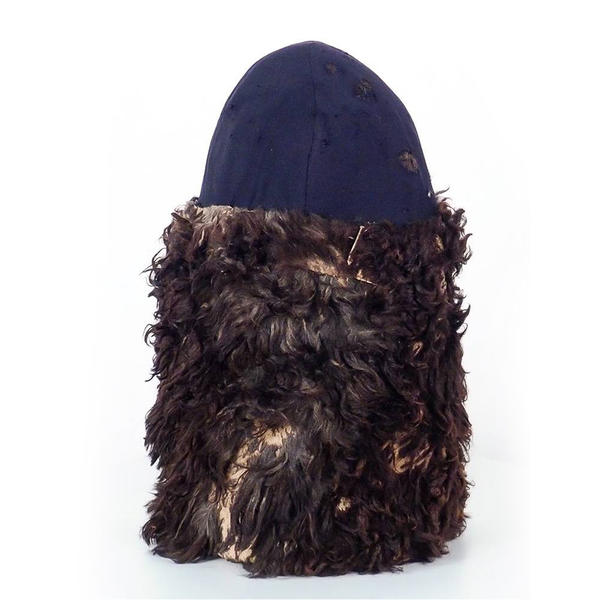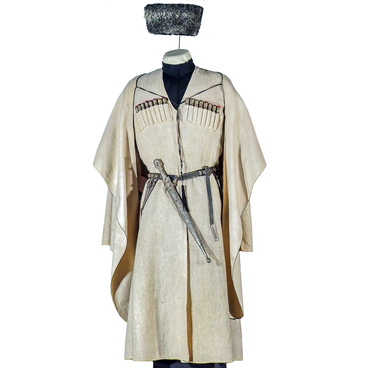For mountaineers, the head-dress was not just an element of their costume. It was first and foremost a symbol of men’s dignity and men’s law. That was why Adyghes practically never took off their caps – be it at home, paying a visit or being in the open air, be it at table, in heat or in cold. If during a conversation, a man was asked to take off his cap, the implication was that he was being haughty or misbehaving. If the cap was knocked off the Adyghe’s head it might as well become a reason for no less than a blood feud.
Male cap
Время создания
Late 19th century
Техника
Sewn sheepskin, woollen cloth
#1
Male cap
#4
#2
Many mountain peoples have very expressive proverbs which emphasise their respectful attitude to the head-dress: “The cap is worn not for warmth but for honour”; “If you don”t have anyone to ask for advice, ask your cap”; “If the head has survived, it must have a cap on”, etc. There is also a well-known suggestive adage - “If you”re a man and wear a cap…”
#5
For most mountain peoples a “cap” was a papakha, a tall head-dress fully made of fur. They most commonly were made from sheepskin or astrakhan, the latter being a fur of very young lambs from Astrakhan skinned on the first-third day of their life. For most mountain peoples a “cap” was a papakha, a tall head-dress fully made of fur. They most commonly were made from sheepskin or astrakhan, the latter being a fur of very young lambs from Astrakhan skinned on the first-third day of their life.
Most papakhas had a thick quilted lining with the hair outside. Such caps were warm, waterproof and protected men from snow, rain, wind and any other kinds of adverse weather, or even from a sabre cut in combat. They often served as thick comfortable pillows for shepherds.
#8
Massive long-hair papakhas made from long curly sheep fur or Angora goat skins were popular in many cultures. The crown of such caps was usually made of velvet or good quality felt cloth. They were very expensive and were considered to be ceremonial. They were worn only on special occasions and in daily life were kept with utmost care covered with a kerchief. Often a ceremonial papakha would be put on only when approaching the destination, an ordinary cap worn while travelling.
#7
Over time, papakhas had become an element of the Russian military uniform. By the middle of the 19th century fur caps had been taken on as a winter head-dress by Cossack troops, and 60 years later they were officially introduced for the whole infantry personnel. During the revolution, many soldiers wore Tsarist army papakhas with a red band on the front.
читать дальшескрыть
00:00
00:00
1x
Male cap
Время создания
Late 19th century
Техника
Sewn sheepskin, woollen cloth
Открыть в приложении
Поделиться



